 Harvard
had previously won mythical national championships in
Harvard
had previously won mythical national championships in 
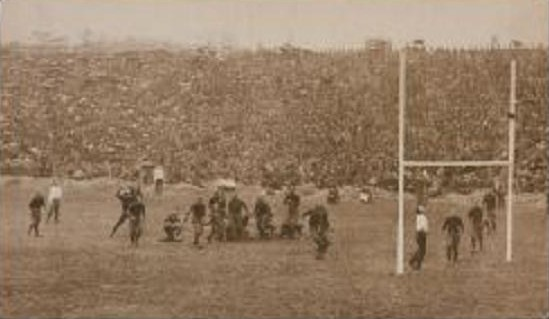
| Maine (5-2-1) | 34-0 | (#26) |
| Bates (1-5) | 14-0 | |
| Williams | 23-3 | |
| Holy Cross (3-6) | 47-7 | |
| Penn State (2-6) | 29-0 | |
| Cornell (5-4-1) | 23-6 | #17 |
| at Princeton (5-2-1) | 3-0 | #15 |
| Brown (4-5) | 37-0 | |
| Yale (5-2-3) | 15-5 | #16 |
 Harvard
had previously won mythical national championships in 1901,
1908, 1910, and 1912, so they came into 1913 as the defending MNC.
Hall of Famer Percy Haughton was the coach for their last three MNCs, and I
covered him in the linked 1908 article. 1913 gives him his fourth imaginary crown.
Harvard
had previously won mythical national championships in 1901,
1908, 1910, and 1912, so they came into 1913 as the defending MNC.
Hall of Famer Percy Haughton was the coach for their last three MNCs, and I
covered him in the linked 1908 article. 1913 gives him his fourth imaginary crown.| Indiana (3-4) | 21-7 | |
| Iowa (5-2) | 23-6 | #25 |
| Purdue (4-1-2) | 6-0 | #21 |
| Illinois (4-2-1) | 28-7 | #21 |
| at Northwestern (1-6) | 14-0 | |
| at Minnesota (5-2) | 13-7 | #9 |
| Wisconsin (3-3-1) | 19-0 | #21 |
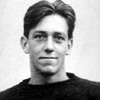 Amos Alonzo Stagg's Chicago Maroons had previously won the 1905 MNC, and they were strong contenders for the 1908
MNC. I covered Stagg in the 1905 article. Chicago had gone 111-34-11 in
Stagg's first 10 seasons 1892-1901, but they really hit their stride in
1902, and were 85-14-5 1902-1913, and had a winning record against
every Western Conference team but Michigan in that time.
Amos Alonzo Stagg's Chicago Maroons had previously won the 1905 MNC, and they were strong contenders for the 1908
MNC. I covered Stagg in the 1905 article. Chicago had gone 111-34-11 in
Stagg's first 10 seasons 1892-1901, but they really hit their stride in
1902, and were 85-14-5 1902-1913, and had a winning record against
every Western Conference team but Michigan in that time.| Harvard 9-0 | Chicago 7-0 |
|||||||||||||||||||||||||||||
|---|---|---|---|---|---|---|---|---|---|---|---|---|---|---|---|---|---|---|---|---|---|---|---|---|---|---|---|---|---|---|
|
|
|||||||||||||||||||||||||||||
| Ohio Northern (5-6-1) | 87-0 | |
| South Dakota (3-3) | 20-7 | (#27-31) |
| Alma (4-3) | 62-0 | |
| at Army (8-1) | 35-13 | #6 |
| at Penn State (2-6) | 14-7 | |
| at Christian Brothers (6-2-1) | 20-7 | |
| at Texas (7-1) | 30-7 | (#27-31) |
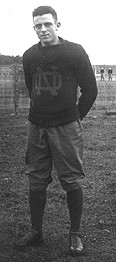
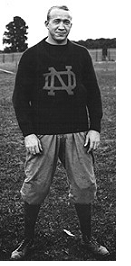 This
was a breakout season for Notre Dame, but they didn't come out of
nowhere. They were 44-3-5 1906-1912, and were the champions of the West
at 7-0-1 in 1909 thanks to an 11-3 win over 6-1 Michigan. In 1912, they
had gone 7-0, albeit against a weak schedule, and 7 of 11 starters
returned from that team. Head coach Jesse Harper, who had played for
Chicago's 1905 national championship team, arrived in 1913, and he
brought with him the passing attack he had developed at Alma 1906-'08
and Wabash 1909-'12. He went 34-5-1 at Notre Dame 1913-1917, at which
point he retired from coaching with an overall record of 59-18-7.
This
was a breakout season for Notre Dame, but they didn't come out of
nowhere. They were 44-3-5 1906-1912, and were the champions of the West
at 7-0-1 in 1909 thanks to an 11-3 win over 6-1 Michigan. In 1912, they
had gone 7-0, albeit against a weak schedule, and 7 of 11 starters
returned from that team. Head coach Jesse Harper, who had played for
Chicago's 1905 national championship team, arrived in 1913, and he
brought with him the passing attack he had developed at Alma 1906-'08
and Wabash 1909-'12. He went 34-5-1 at Notre Dame 1913-1917, at which
point he retired from coaching with an overall record of 59-18-7.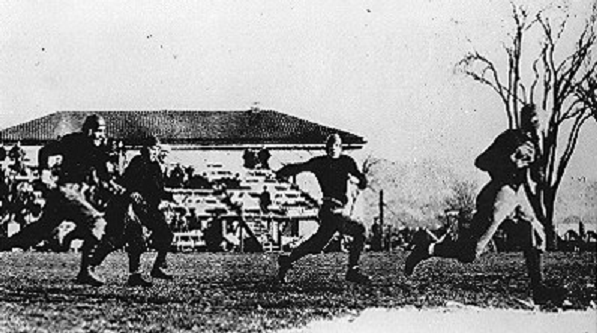
| Washburn (3-3-2) | 19-0 | |
| Kansas State (3-4-1) | 24-6 | |
| Minnesota (5-2) | 7-0 | #9 |
| Haskell (6-2) | 7-6 | (#40-50) |
| at Iowa State (4-4) | 18-9 | |
| Nebraska Wesleyan (4-3-1) | 42-7 | |
| at Kansas (5-3) | 9-0 | |
| Iowa (5-2) | 12-0 | #25 |
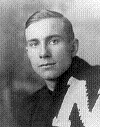 Nebraska had previously posted perfect records in 1902 and 1903.
They ruled the rather weak Missouri Valley region, and were in the
middle of a run of 8 straight conference titles, but they had a
national reputation because they always scheduled a couple of power
teams, usually from the Western Conference (Big 10). From 1900 through
1913, they were 104-22-7, though only 10-13-3 against the Western
Conference (2-10-1 against Minnesota).
Nebraska had previously posted perfect records in 1902 and 1903.
They ruled the rather weak Missouri Valley region, and were in the
middle of a run of 8 straight conference titles, but they had a
national reputation because they always scheduled a couple of power
teams, usually from the Western Conference (Big 10). From 1900 through
1913, they were 104-22-7, though only 10-13-3 against the Western
Conference (2-10-1 against Minnesota).| Olivet (4-3) | 26-0 | |
| Alma (4-3) | 57-0 | |
| at Michigan (6-1) | 12-7 | #5 |
| at Wisconsin (3-3-1) | 12-7 | #21 |
| Akron (3-4) | 41-0 | |
| Mount Union (4-3-2) | 13-7 | |
| South Dakota (3-3) | 19-7 | (#27-31) |
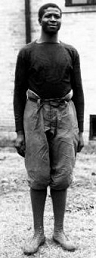 Like
Notre Dame, Michigan State had long been posting strong records against
mostly minor schools. They were Michigan Agricultural College (MAC)
at this time, and first emerged as a top minor school under coach
Chester Brewer, who went 56-10-6 1903-1910, gaining a landmark tie with
Michigan in 1908 and a big win against Notre Dame in 1910. Brewer
withdrew MSU from the Michigan Intercollegiate Athletic Association,
and the school became an independent with an eye toward big-time
football and entrance into the Western Conference (Big 10), though that
invitation was still four decades away.
Like
Notre Dame, Michigan State had long been posting strong records against
mostly minor schools. They were Michigan Agricultural College (MAC)
at this time, and first emerged as a top minor school under coach
Chester Brewer, who went 56-10-6 1903-1910, gaining a landmark tie with
Michigan in 1908 and a big win against Notre Dame in 1910. Brewer
withdrew MSU from the Michigan Intercollegiate Athletic Association,
and the school became an independent with an eye toward big-time
football and entrance into the Western Conference (Big 10), though that
invitation was still four decades away.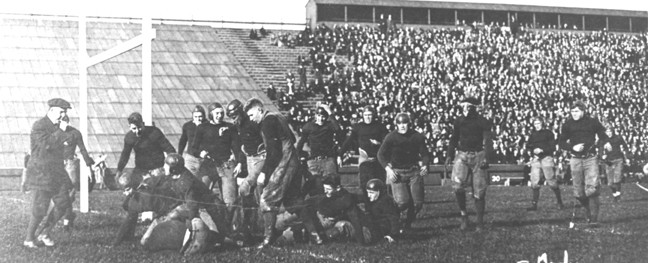
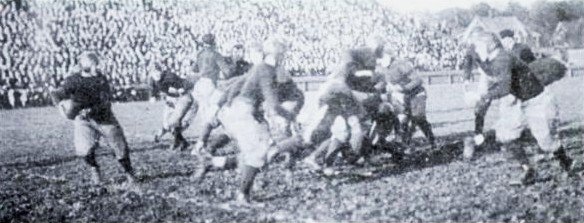

| Notre Dame 7-0 | Nebraska 8-0 |
Michigan State 7-0 |
||||||||||||||||||||||||||||||
|---|---|---|---|---|---|---|---|---|---|---|---|---|---|---|---|---|---|---|---|---|---|---|---|---|---|---|---|---|---|---|---|---|
|
|
|
||||||||||||||||||||||||||||||
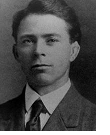 I
don't consider 8-0 Auburn to be a contender for the 1913 MNC because
they played in a relatively weak region, and defeated no top 25 caliber
opponents, but they did pummel a group of teams that had very
impressive straight records, so let's take a look at them and the South
in general.
I
don't consider 8-0 Auburn to be a contender for the 1913 MNC because
they played in a relatively weak region, and defeated no top 25 caliber
opponents, but they did pummel a group of teams that had very
impressive straight records, so let's take a look at them and the South
in general.| Mississippi State (6-1-1) | 34-0 | (in Birmingham) |
| LSU (6-1-2) | 7-0 | (in Mobile) |
| at Georgia Tech (7-2) | 20-0 | |
| Vanderbilt (5-3) | 14-6 | (in Birmingham) |
| Georgia (6-2) | 21-7 | (in Atlanta) |
| 1) Houlgate (math system) | 4.23 |
| 2) Parke Davis | 4.20 |
| 3) Helms | 4.0 |
| 4) Billingsley (math) | 3.9 |
| 5) National Championship Foundation | 3.2 |